Three Opportunities to Make Your Own Traditions
Friends! What an incredible time of year and I wanted to write this post about three different “occasions” that really all stemmed from one (you’ll find out what I mean in this post). From there, I’ll talk about incorporating your own ceremonies/activities for these important days.
Since these fall at the end of October and the first part of November, I’ll be back next week with an update on the LIFE Project.
I’m writing about these three holidays because not only do they mark the end of the growing season, they honor our ancestors and relations, and have shaped the way a number of civilizations start off the winter season.
In addition, I was a guest-speaker at a class last week about “spirituality and leadership” and I loved what the instructor said: spirituality can be organized religion, but it can also be a way to find your own way and find what lights your path to make you whole.”
YES!
I am a HUGE proponent of using tradition as a starting point for helping us all find our own paths.
For the upcoming three holidays, I will include a brief description of each as many of you are familiar with them, as there are also countless articles of each one on the Internet. However, Samhain begot Halloween which (sort of…the Aztecs already had their own version of celebrating death) upon colonization begot Day of the Dead.
I describe all of them and some of the traditions to perhaps give you some ideas on ways to celebrate these occasions and incorporate them into your own spiritual lexicon.
Samhain
Samhain (pronounced “sow-in”) originated from the Celtics and is a “Festival of the Dead.” It’s often celebrated from sundown on 31 October to sundown on 2 November, though different groups are known to celebrate it as late as 6 November. Some groups celebrate for one day, and others celebrate for multiple days.
For some, it is the beginning of a spiritual new year, a time when the earth is coldest (in the northern hemisphere).
However people celebrate this day, it is an homage to ancestors and marks the start of winter. This is a time when the line between the living world and the ancestral world is thin and therefore should be honored. For people who have lost loved ones, especially recently, this celebration can help to bring closure for someone still experiencing grief.
Folks who observe this holiday may incorporate their own rites, celebrate with others, or both.
Fire ceremonies are common, as are costumes* to ward off evil spirits.
Halloween
Interestingly, Samhain was the precursor to Halloween as Christianity spread throughout Europe. In the eighth century, Pope Gregory III made 1 November the “All Saints’ Day.”
This was no accident: it was a way to appeal to the pagans who celebrated Samhain. A version of All Saints Day occurred in May, but with the Pope moving this day to November, he could hopefully bring in more converts to Christianity.
To honor all dead, the church created “All Souls Day” on 2 November.
31 October became “All Hallows Eve” for celebrations in anticipation of the more solemn All Saints’ Day.
Eventually these celebrations became more secular, incorporating pumpkins, treats and festivities as a way to mark the coming shorter and colder days, especially after early colonists to North America created their own version of Halloween.
The day has now evolved to be more about community and less about frightening ghosts, goblins and spirits – with the exception of costumes. Halloween parties are common.
Day of the Dead
This holiday is gaining popularity in the United States. However, it is a holiday that originated in Mexico. Before the Spanish Conquest, the Aztecs would mourn the loss of loved ones with celebrations of their ancestors in the month of August – one to celebrate adults and one to celebrate the “little ones.”
In order to help facilitate an easier time of making converts, the Catholic church allowed the Aztecs to continue their mourning and celebrations, but moved them to 1-2 November. (Which, with preparations and various celebrations, take up about a week.)
In Mexico (and increasingly in the United States*), families decorate altars with flowers such as marigolds, and food as an homage to their loved ones whom “visit” their earthly relatives during these days.
Families cook their ancestors’ favorite foods, gather together as a family at home and at the cemetery, and honor their relations in other ways such as through playing their favorite music.
Still, merchants make candy skulls, some people wear skull costumes in an effort to “mock death” and commune with those who have already passed on.
So you can see that ultimately, many countries and cultures celebrate the onset of post-harvest, the coming cold days, and loved ones who have passed on, thanks to our ancient pagan ancestors, early colonists and the Aztecs.
Forging Traditions
Halloween
On all Hallow’s Eve (Halloween), I haven’t always enjoyed dressing up in costumes. Sometimes I do, but I just listen to what my heart tells me at the time. This year I am dressing up, while last year I did not.
Perhaps your friends and family dress up for Halloween, gather together and take younger children trick or treating. This is a great family tradition. Just be mindful of the cultural appropriation piece (see the *below if you are wondering what that is).
This year I’ve chosen to dress up as the Mad Hatter. I am in the process of building the hat. It actually is a strangely wonderful process of creating my own unique costume but still recognizable as a movie character.
I’m not sure why I was drawn to be the Mad Hatter, actually. It just seemed like a low-key but still very fun costume that meshes with my personality. I’ll post a photo over on the I & S Facebook page on Tuesday (31 Oct).
On Halloween evening, my husband and I will meet some friends and family and walk downtown in the town where I live. We discovered last year that many folks come out and walk around, with some shops offering treats to children.
We’ll culminate the evening with gathering together at a fitting place: Boojum Brewing Company. We’ll get fall-themed drinks, and enjoy some revelry.
“Boojum” is the southern US version of the “boogey man” who is said to have walked these Appalachian Mountains looking for his wife, Annie, otherwise known as “Hootin’ Annie” who looked for her partner by calling for him.
Other Ideas for Halloween Traditions
- Gathering with friends and family at home
- Going to Haunted Houses
- Watching scary movies together (or funny-scary ones)
- Lighting candles to remind us of the fire within, and how we can be our own light
- Drinking cider
- Carving pumpkins
- Roasting pumpkin seeds
Day of the Dead and Samhain
When I was younger and growing up Catholic, my family always went to church on 1 November – All Saints’ Day.
Because I do not practice Christianity or Catholicism (although I think Christ was a cool dude with valuable lessons to share), I have often wondered about making my own, new traditions on this day.
We all know someone who has passed away, whether it is someone close to us or maybe someone we don’t know that well.
While I can’t speak for other countries in great detail, I will say that US culture doesn’t really have healthy ways of dealing with death. Our culture – for better or worse – is fixated on youth and how to stay young-looking, feel younger, and we are quite taken with the youngest members of our society (not that adoring our children is a bad thing).
People are not given adequate time to grieve when it comes to the death of a loved one. Bereavement leave is usually around 2 days in many places of employment.
After that, people may ask for a week or two how we’re doing following the death of a loved one, but then after that, we’re expected to move on. We don’t have good ways to express sympathy. We’ll often say, “I’m sorry for your loss,” and leave it at that.
It’s because we’re not taught how to deal with it, nor do we have strong ceremonies/activities for the people who go on living.
This is something that I admire about Mexican culture. People take time to sit with death. They mourn loved ones and “sit with death.”
My Spanish-speaking grandmother (though she was from New Mexico) wore a black veil and clothing for 40 days after the death of one of her sons. She also fasted and celebrated him around the Day of the Dead.
Some years I remember my loved ones who have passed on by lighting a candle, or by looking at one of their pictures. But I haven’t ever made a tradition out of doing this.
As I get older, I am feeling the need to do this more.
This year, on 2 November, I’m going to create a bonfire and use the herb sage to burn with the wood, as well. This is a symbolic way of warding off evil spirits and making room for positive energy. I will also post a photo of this over at the I & S Facebook page.
Ways to incorporate and create traditions with your friends/family for Day of the Dead and Samhain:
- create a bonfire
- perform a smoke cleansing
- visit a cemetery
- gather pictures of loved ones and revisit happy memories
- create an altar
- read a poem (fellow blogger and friend, Sue Dreamwalker has a beautiful poem on Samhain)
- write a poem
- reflect back on the year
- write intentions for the new spiritual year
- do a meditation on death (which, I will be doing as part of the November LIFE Project – more on that next week)
- organize a family/friend gathering
- express gratitude for the season’s harvest
*A Note About Cultural Appropriation
Cultural appropriation is defined as “when someone takes or uses elements of a culture to which they do not belong and does so without the permission or consent of those who do belong to the culture. In the context of the United States, cultural appropriation most often happens across racial lines and features white people taking and using elements of a culture from people of color, though not exclusively.” Thoughtco.com (see references).
In the US, there is growing criticism of participation of non-Mexican heritage people in Day of the Dead festivities, for example, because of cultural appropriation.
Often, celebrations around Day of the Dead do not have one single person from Mexico as part of the festivities to provide cultural context and different elements – such as skeleton costumes – are pulled out of context for commercial profit.
This has happened for centuries with white folks, especially, taking artifacts, food, music, and other cultural items away from an oppressed culture and profiting from it.
One of the more famous examples is of Solomon Linda from the Zulu Tribe in Africa and his song, “The Lion Sleeps Tonight.” He couldn’t read or write, but he could make truly wonderful music. Eventually his song would make it around the world, but didn’t give him credit. Songmakers added words and retooled it a bit, and it went on to make millions of dollars and as the song we know of today. Finally, after decades of non-payment, Solomon’s family was compensated in 2006, decades after his death.
As for the term, “smoke cleansing” (for when I talk about creating your own traditions), I use this in place of “smudging,” which is a term that comes from our Native American Indian brethren and is used to refer to a sacred ceremony or ritual in that culture(s).
Out of respect, since I did not grow up in that culture, I use the term “smoke cleansing” to talk about using a sage stick in a cleansing way.
As part of my own awakening and compassion for others, I humbly accept my role as a white member of US society who may have ancestors who did not treat other groups of people respectfully. I do not want to be disrespectful in any way to any groups and cultures of folks who have been historically oppressed.
I am especially aware of this right now as I have been taking a professional development course called, “Building Bridges” which teaches about “white privilege” and how pervasive and insidious it is in US culture. I admit I have been ignorant in this regard, but I am continually learning and evolving into a more compassionate being and strive to not be complicit, but to do better.
References:
https://www.circlesanctuary.org/index.php/celebrating-the-seasons/celebrating-samhain retrieved 29 Oct 2017.
https://www.thoughtco.com/about-samhain-history-2562713 retrieved 28 Oct 2017.
https://www.thoughtco.com/cultural-appropriation-definition-3026068 retrieved 28 Oct 2017.
http://www.history.com/topics/halloween/history-of-halloween retrieved 29 Oct 2017.
http://www.mexicolore.co.uk/aztecs/home/day-of-the-dead-2 retrieved 29 Oct 2017.
https://www.theguardian.com/commentisfree/belief/2010/nov/02/mexican-celebrate-day-of-dead retrieved 29 Oct 2017.
http://performingsongwriter.com/lion-sleeps-tonight/ retrieved 27 Oct 2017.
All images courtesy of Pixabay Creative Commons photos (except title picture – my creation)
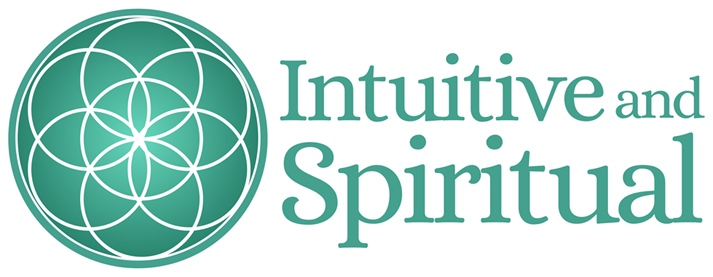
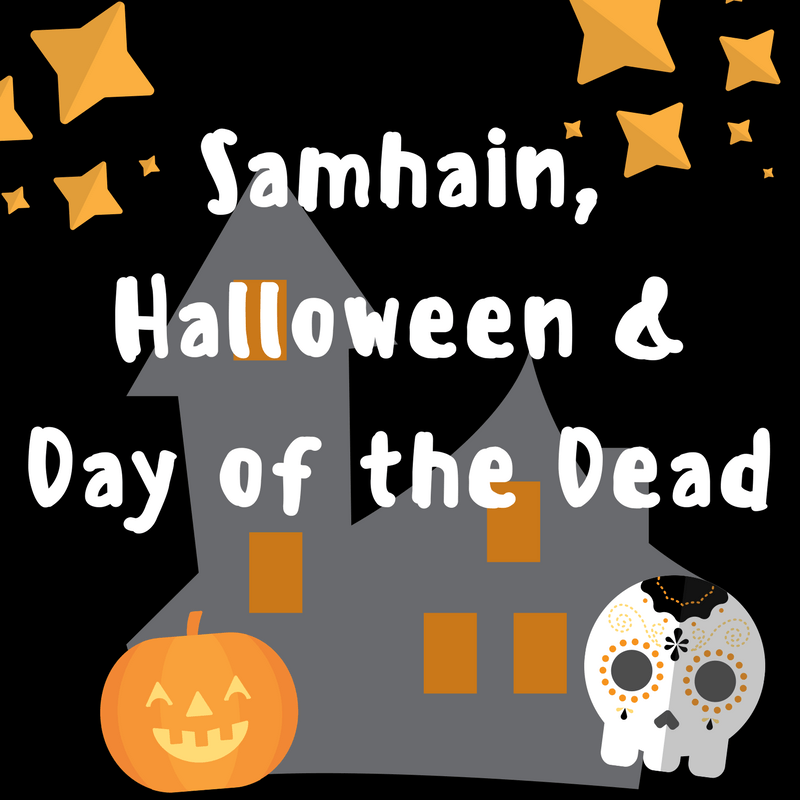

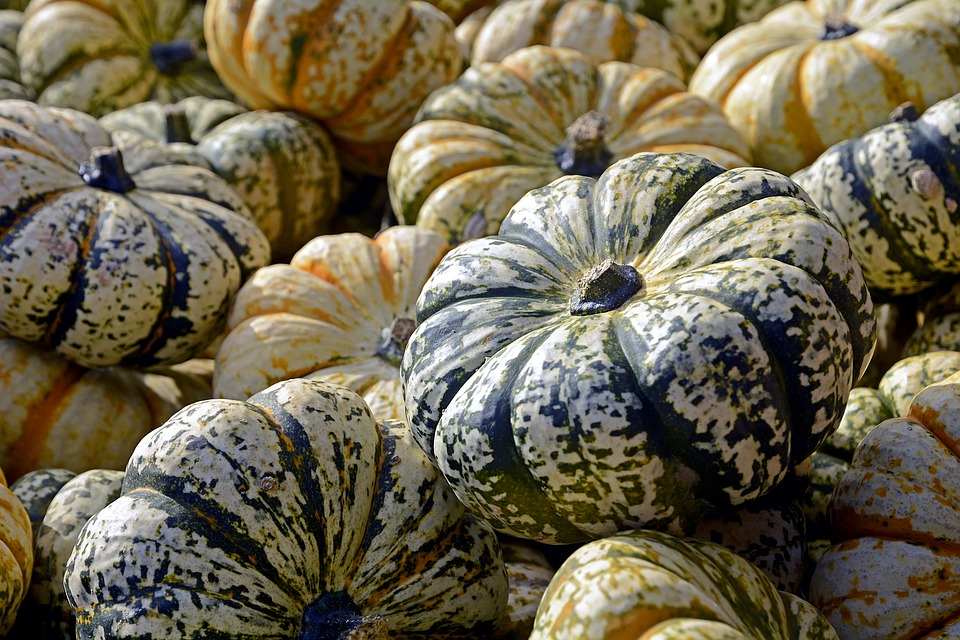
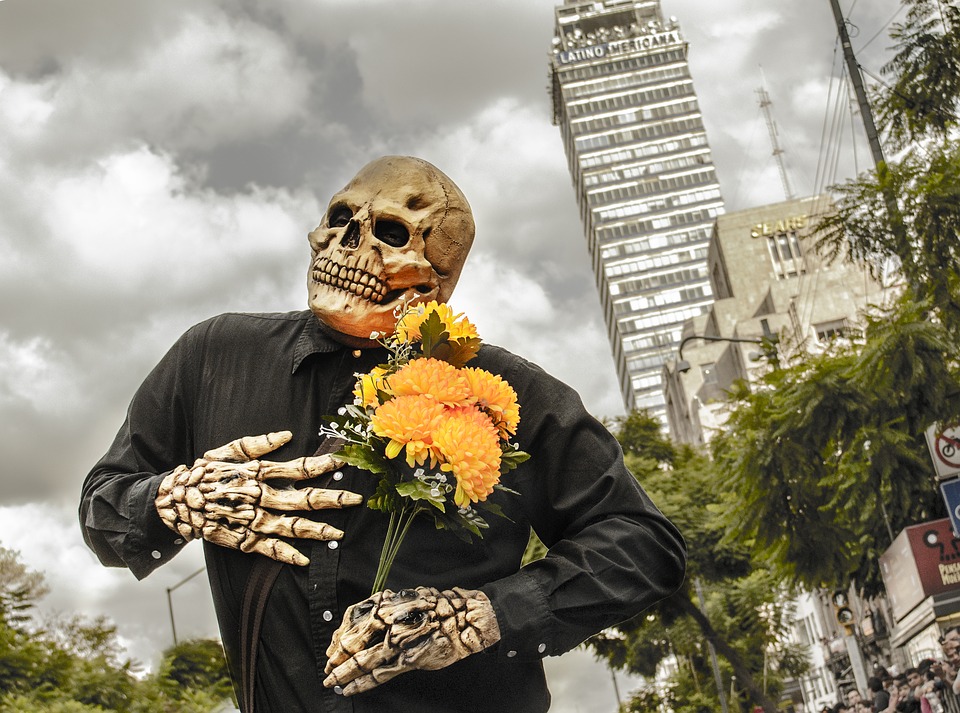
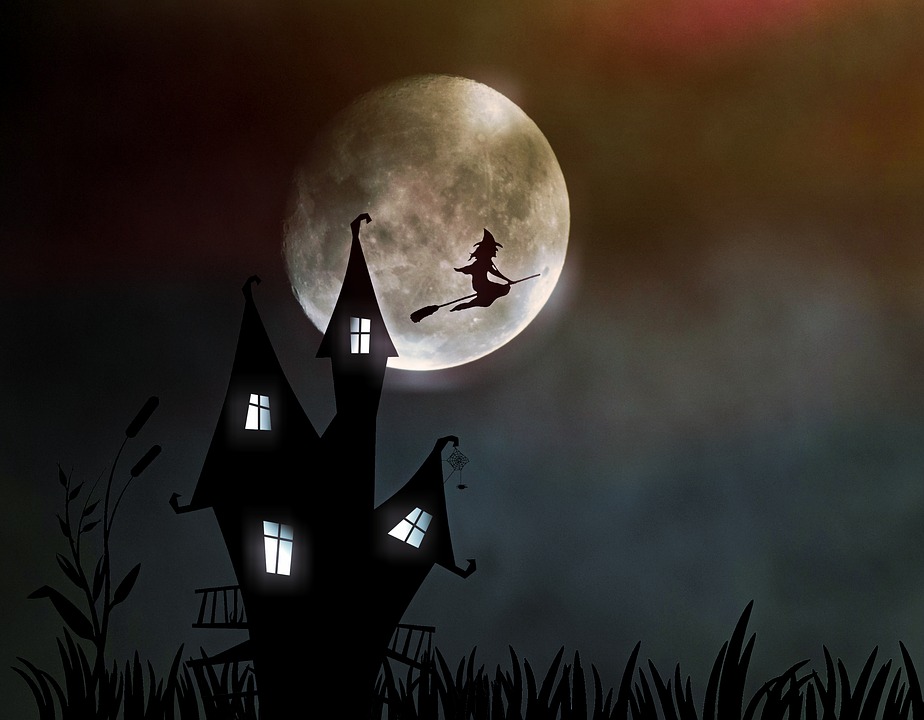
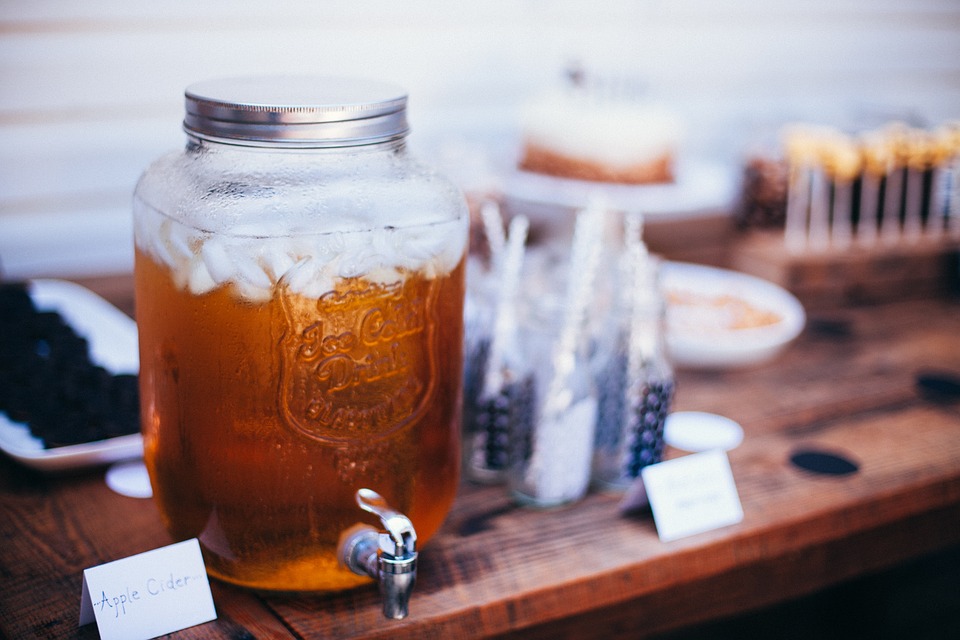
As much as I am summer girl at heart, I happen to love the fall for Halloween and the Day of the Dead, too. So, I love your ideas here for celebrating them. Plus, I hope you share your Mad Hatter costume with us if you can as I am excited to see you dressed up. Happy Halloween and so much more, my friend this rainy NY Monday now!! Hugs <3 xoxo
Janine – EXACTLY. Summer & fall are my favorites…until spring. *giggle* Winter I only appreciate when it’s over. :’D And hopefully you saw the shares of Mad Hatter. Hehe. I hope you’ve had a wonderful week! xox
That was a fun read, Lil Sis! Educational as an added bonus. Bev and I are big on starting our own traditions. We really don’t follow the norm. Normal Rockwell wouldn’t have painted our family’s picture at holiday time, but it all works for us. 🙂 Have a super week!
Thanks so much, Big Bro! Education is my M.O. But then again…this is why I’m a self-proclaimed nerd. Education and words and literature and art…and I just love, love it! 🙂 Create those traditions! They might lead to many happy memories.
I’m all for learning from other cultures and traditions can give us a foundation to build on. Thanks for your thorough and honest exploration of seasonal traditions. I can definitely see you as the Mad Hatter in a fun way. Happy Haunting!
Learning about other cultures is one of my favorite things. People fascinate me that way. 🙂 I hope you’ve had a good week, Brad! Haha…that Mad Hatter costume was one of the more fun ones I’ve done. 🙂
Informative read on seasonal traditions during my favorite time of the year, dear Cynthia.
I especially appreciated your explanation of / sensitivity regarding cultural appropriation.
Wishing you a BOOtiful Halloween. Love, Maria
Maria – thank you. 🙂 I love this time of year: the end of October – November – a time of gratitude, of looking within, of celebrating…I hope you had a BOOTIFUL Halloween, too! Sending you big hugs! oxxoxox
Hi Cynthia…
Thank you for all the information and I have learned many new things from your writing. New traditions for me bring change in a new way. We have a tapestry of culture in both Canada and the US. I alway enjoy trying new things… new traditions are things to enjoy first hand. For years on New Years Eve rather than go to the bars I would always have a huge bonfire. The first year there was only a few people, as time passed you would see more lawn chairs and people congregate at my place. It was also the time of the year to bring out the latest batch of picked moose sausage known as Wildman Rolly Toots… na best not ask why.
Hugs as always
Rolly – that bonfire idea makes me WANTTO START A NEW YEAR’S BONFIRE TRADITION!!! Hmm…I need to build a fire pit. I’d better hop on pinterest for some ideas. That website…sheesh…you can get lost in it. 🙂
Tapestry of culture: good phrase. And indeed we are a tapestry, aren’t we?
And moose sausage? I know J would go for that. Me? Please give me a plant to eat. HAHAHAH. Sending you big hugs, dear friend! Hoping you’ve had a great week! xo
This is a comprehensive read, Cyndi, from the origins of Halloween to the ideas for creating our own traditions. I like the idea you proposed for lighting a candle to symbolize the light within us. I’m hoping your walk downtown went well 🙂 Cheers to another great post! Thank you too for the contest opportunity for subscribers that ends on the 3rd <3
Christy – ah, thank you. 🙂 I definitely loved the sacred fire we made at school this week, and the walk for Halloween was really fun! In fact, the town started a new tradition this year: they closed down Main Street so that kids could safely trick or treat by going to all the stores. Just about everyone had a costume on – it was great fun! 🙂 Thank you for the awesome comment and for your sweet words – always. You are a gem! I hope you’ve had a great week and talk to you soon! Big hugs! xo
What an interesting and such informative post Cynthia.. I loved it.. And although I know a lot about these festivals you brought me many things I did not know. Such as the piece about Solomon Linda.. I love that song ‘ The Lion Sleeps Tonight’ and did not know about its origins..
I often smudge, using sage, much to the annoyance of hubby, lol..
We have also here on the 5th of November, Bonfire Night, and while effigies of Guy Fawkes are burned on top, in his failed attempt at blowing up the houses of parliament in the UK..
I feel that the tradition is also linked more closely with Samhain than we are led to believe.
And I lit a candle this morning, on my own makeshift altar which has many crystals in a sand bowl, and remembered those who have passed, as well as sending out healing thoughts to all names held within my healing book.
I think it is good we develop our own little traditions, in honouring those who have crossed.. And while it is sad, when we lose a loved one and someone very close.. It is so important to grieve and, be allowed that room to grieve..
I remember well when after looking after my Dad and his final passing, While I knew he had transcended to a better place and was no longer struggling in pain.. I still had to grieve..
So I shut myself in my room, turned on my Native American Drum Music,, I took out my own Drum and I howled and howled as I beat my drum..
And in that ceremony I released such a lot of grief and felt so much lighter as a result..
So reading that in the USA 2 days are what is only allowed.. Shocked me.. Here you can have more time and we are very compassionate usually about bereavement leave..
As always yours posts Cynthia are put together with such a lot of thought.. And I enjoyed taking our Granddaughter trick and treating, for an hour around our estates here, while her Mum and other Grandpa came for a visit, as my Son was working..
The following day she came down with Chickenpox. But she is not unwell with it so far..
Thank you again my friend.. And I hope you have a wonderful weekend..
I think I am shutting down the Modem this weekend and getting out the paints.. My knitting now finished and I need another project to concentrate upon..
Love and Blessings and Mega HUGS..
Sue xx
<3
Sweet Sue – thank you for your comment here. I love the depth with which you often explore a concept and, in turn, it makes me really think about what I put into my posts and what others might take from it. In my research, I had no idea about “The Lion Sleeps Tonight” – I love, love that song and had no idea that it had tribal origins. So…tomorrow night is Bonfire Night!? I LOVE THAT! My blogger friend Rolly mentioned that he makes a bonfire each New Year and I think I might have to start that tradition. 🙂 Oooh…and somehow tie it in to intentions…maybe put some sage into the fire. Oh, my head is spinning with ideas. 😀
As for Day of the Dead and the bereavement process…yes…”officially” at my last place of work, you had 2 days of bereavement. If you had more time built up (like extra vacation days) you could certainly take more time, but only if you actually had that time. Otherwise it’s a day without pay. It’s kind of sad that it wouldn’t at least be a week.
I love trying to put together posts that I hope folks will benefit from. They take a long time to create – often two days or more – just brainstorming, writing the content, and then editing and finding photos. It thrills me that you enjoyed it. 🙂 I hope you’re having a wonderful weekend painting. I have been behind this week, admittedly, with all the celebrations and we’ve had family in town and the change of seasons and the time change…
Love and blessings to you, sweet friend! You make me smile so! HUGS!! xo
We’re not much for celebrating Halloween here, our tradition has always been to feast on a bunch of junk food and sweets and watch some (sort of) scary movies. Can’t handle all the gore, ewe… I like that you included scary-funny ones in your list haha, I think we’ll stick to those next time. Fun post to read, and interesting info! Hope you’re having a fab start to the weekend, friend! Sending hugs xxx
Melanie – thank you! It’s so interesting how Halloween gets processed and interpreted in different cultures. In my research for this post, I had read that it really took off in light of the heavily Puritan colonists who had created a very “stiff” culture – others wanted a way to let loose. And so it was after All Hallow’s Eve got reinterpreted in the newly formed US colonies with tricks and treats to commemorate the day that it started gaining traction. So…I guess one could say that without those early colonists rebelling a little bit, Halloween wouldn’t be what it is today! lol. So, it makes sense that it would be different in South Africa. SA culture would put its own spin on it. 🙂
In any case, it’s been a nice start to the weekend. I hope you’re having a nice, relaxing Saturday yourself. Sending you BIG HUGS!! XOXO
Thank you Cynthia for that lovely answer my friend.. Enjoy your brainstorming time. and keep following the flow..
I have been writing trying to link my poetry in a form that weaves a kind of narrative of a journey of self discovery without it getting too personal and adding in my poetry,, I want to publish some of poems, but just just as poem after poem..
For the poems were all written at various stages within my awakening to the path I am on.. Its not as easy as I first thought.. I am only on page 9 lol in my Word Book formatting .. But I too am following my intuitive guide and it will come together I know if it is meant to..
Sending Love and Hugs my friend.. And thank you once again for your feedback and wonderful replies..
Love Sue <3 xx
Sweet Sue – hehe, I did this whole brainstorming mind-mapping thing for a new novel I’d like to get started on and have a lil story in the works. Whether I actually publish remains to be seen, but I can say that my confidence grows with each one I attempt. Funny: I was confident about the coloring books and drawings, but for some reason, I always feel like my stories fall flat. That said, I am persistent and committed to keeping on practicing and I’ll get there. Hehe. And see, you’ve done something similar: all your poems written at different stages – this is why they are so incredible. The gift of time has helped you to formulate some phenomenal stanzas, my friend – though I have a feeling they were always phenemonal! And taking time to listen to your Intuitive Guide, well, you can’t go wrong there. 🙂
Thank you, too, for your feedback! Sending big hugs! xo